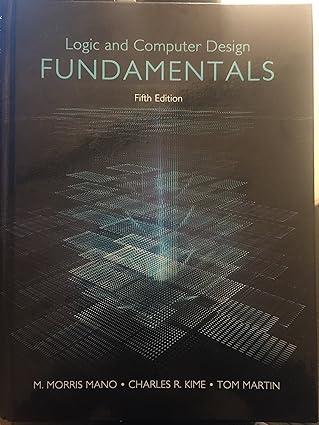The sequence in Problem 4-21 is a lag used in a communication network that represents the beginning
Question:
The sequence in Problem 4-21 is a lag used in a communication network that represents the beginning of a message. This lag must be unique. As a consequence, at most ive 1s in sequence may appear anywhere else in the message. Since this is unrealistic for normal message content, a trick called zero insertion is used. The normal message, which can contain strings of 1s longer than 5, enters input X of a sequential zero- insertion circuit. The circuit has two outputs, Z and S. When a ifth 1 in sequence appears on X, a 0 is inserted in the stream of outputs appearing on Z and the output S = 1, indicating to the circuit supplying the zero- insertion circuit with inputs that it must stall and not apply a new input for one clock cycle. This is necessary because the insertion of 0s in the output sequence causes it to be longer than the input sequence without the stall. Zero insertion is illustrated by the following example sequences:

(a) Find the state diagram for the circuit.
(b) Find the state table for the circuit and make a state assignment.
(c) Find an implementation of the circuit using D lip- lops and logic gates.
Problem 4-21:
Repeat Problem 4-20 for the sequence 01111110 that is used in a different communication network protocol.
Problem 4-20:
A Universal Serial Bus (USB) communication link requires a circuit that produces the sequence 00000001. You are to design a synchronous sequential circuit that starts producing this sequence for input E = 1. Once the sequence starts, it completes. If E = 1, during the last output in the sequence, the sequence repeats. Otherwise, if E = 0, the output remains constant at 1.
Step by Step Answer:

Logic And Computer Design Fundamentals
ISBN: 9780133760637
5th Edition
Authors: M. Morris Mano, Charles Kime, Tom Martin





